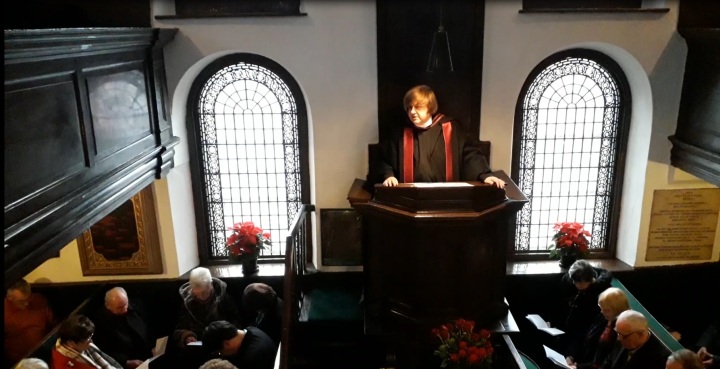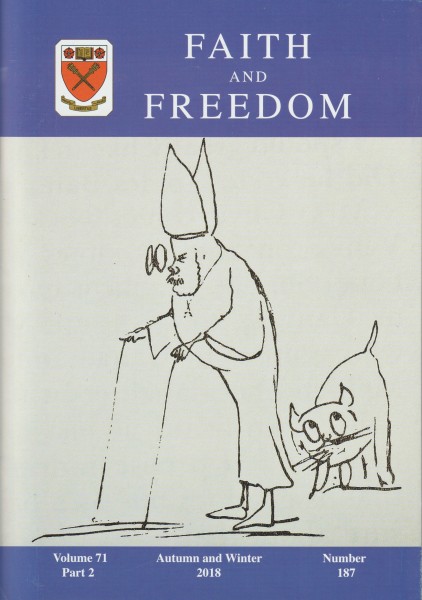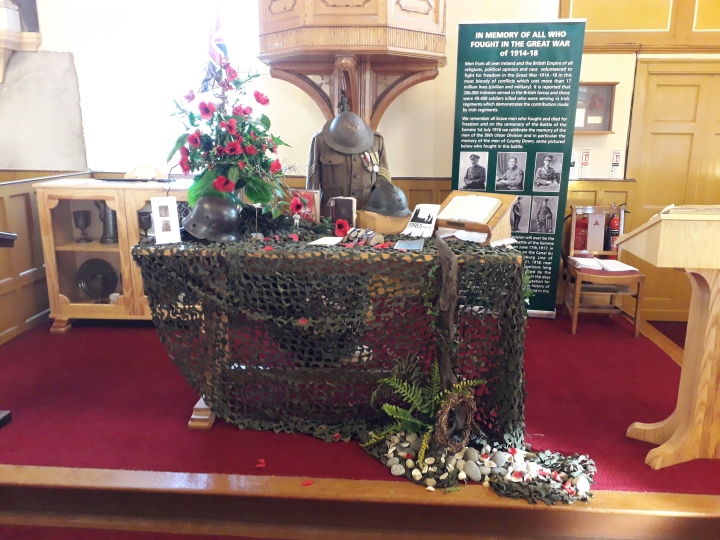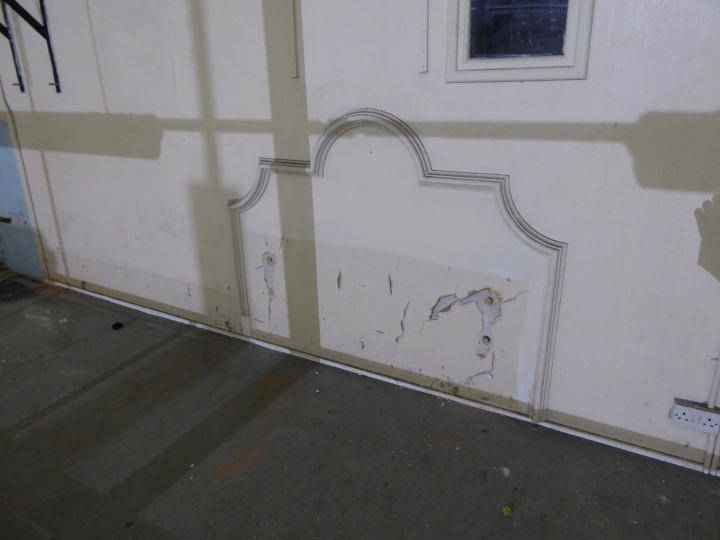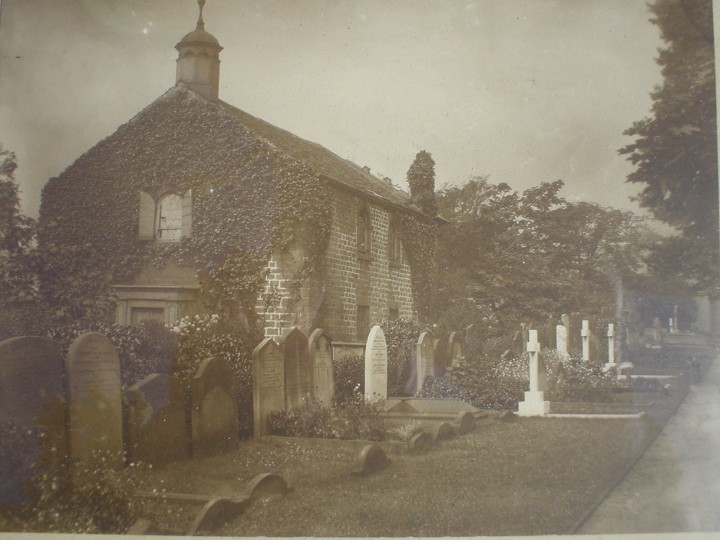The latest issue of Faith and Freedom (Autumn and Winter 2018, Volume 71 Part 2, Number 187) is now available.
The front cover has a self-portrait of Edward Lear as the ‘Archbishoprick of Canterbury’ with his cat Foss which relates to Howard Oliver’s article Beyond the Nonsense: Edward Lear and his Writings on Religion and Faith, a rare examination of the religious thought of this unique artist. Other articles include Barrie Needham’s exploration of language, reason and faith in Mysteries Too Deep for Words; Dan C. West’s For Fear of the New, Missing the God of Surprises looks at how we respond religiously to the destructive contemporary challenges that are emerging in society on both sides of the Atlantic; Frank Walker makes a distinction between ‘official’ and ‘unofficial’ Christianity in What has Christianity ever done for us?; and Peter B. Godfrey recounts his experiences and memories of A Theological Student at Oxford 1953 to 1956.
As always the journal is richly supplied with reviews, including two review articles:
Alastair McIntosh, Poacher’s Pilgrimage – An Island Journey, Birlinn, Edinburgh, March 2018, pp 285, ISBN 9781780274683. £9.99 Pbk. Reviewed by Jim Corrigall. An insightful evaluation of this book informed by an interview Jim conducted with the author.
Unitarian Theology II. Papers given at the Unitarian Theology Conference, Mill Hill Chapel, Leeds October 2017. Edited by David Steers. (Faith and Freedom, 2018). ISSN 0014-701X. Reviewed by Bob Janis-Dillon who gives a close examination of the supplement which accompanied the Number 186 of Faith and Freedom.
Other books reviewed are:
Derek Guiton A Man that Looks on Glass: Standing up for God in the Religious Society of Friends (Quakers), FeedARead Publishing, 2015, pp 266. ISBN: 978-1-78610-232-4. Reviewed by Stephen Lingwood.
Rachel Hewitt, A Revolution of Feeling: The Decade that Forged the Modern Mind, Granta, 2017, pp 560. ISBN 978 1 84708 573 3. Hbk £25. Reviewed by Ernest Baker.
Jane Shaw, Pioneers of Modern Spirituality: The Neglected Anglican Innovators of a ‘Spiritual but not Religious’ Age, Darton, Longman and Todd, London 2018, pp 117, ISBN 978-0232053286-9. £12.99 pbk. Reviewed by Jim Corrigall.
Mike Aquilina and Grace Aquilina, A History of the Church in 100 Objects, Ave Maria Press/Alban Books. Notre Dame/Edinburgh, 2017, pp 424. ISBN 9781594717505. £20.99 pbk. Reviewed by David Steers.
Simenon Honoré, Education for Humanity, Spirit of the Rainbow, Suite 70, 2, Mount Sion, , Tunbridge Wells, TN1 1UE, pp88, ISBN 978-0-9566767-5-7, PB £5, plus £2 p&p. Reviewed by Peter B. Godfrey.
If you would like to take out an annual subscription please send a cheque for £15 to the business manager:
Nigel Clarke,
Business Manager, Faith and Freedom,
16 Fairfields,
Kirton in Lindsey,
Gainsborough,
Lincolnshire.
DN21 4GA.
Or you can go online and subscribe via PayPal:
http://www.faithandfreedom.org.uk/subs.htm







